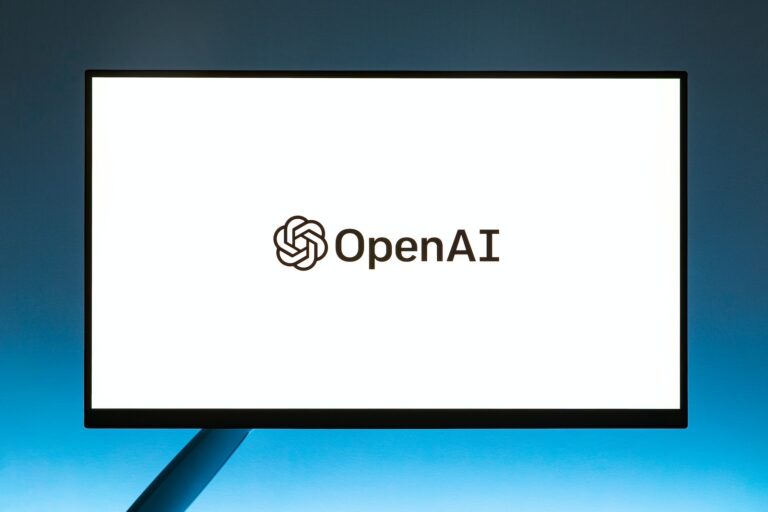Exploring OpenAI: An Introduction to the Organization and Its Groundbreaking Technologies

Throughout my website, following the links to any of my affiliates and making a purchase will help support my efforts to provide you great content! My current affiliate partners include ZimmWriter, LinkWhisper, Bluehost, Cloudways, Crocoblock, RankMath Pro, Parallels for Mac, AppSumo, and NeuronWriter (Lifetime Deal on AppSumo).
For tutorials on how to use these, check out my YouTube Channel!
Artificial intelligence (AI) has the potential to significantly impact the way we live and work, and OpenAI is at the forefront of this revolution. In this post, we will introduce OpenAI and its groundbreaking technologies, focusing on its latest achievements and powerful AI models.
What is OpenAI?
OpenAI is an AI research organization founded in December 2015 by Elon Musk, Sam Altman, Ilya Sutskever, Greg Brockman, and others. Its mission is to ensure that artificial general intelligence (AGI) benefits all of humanity. To achieve this mission, OpenAI focuses on long-term safety research, actively cooperating with other research institutions, and working to create a global community.
The OpenAI Charter
OpenAI operates under a set of guiding principles outlined in the OpenAI Charter, which emphasizes the following:
- Broadly distributed benefits: OpenAI commits to using its influence to ensure AGI benefits everyone and is not used to harm humanity or concentrate power.
- Long-term safety: OpenAI prioritizes long-term safety research to make AGI safe and to drive the adoption of safety measures across the AI community.
- Technical leadership: OpenAI aims to be on the cutting edge of AI capabilities, as it believes policy and safety advocacy alone would not be sufficient.
- Cooperative orientation: OpenAI actively cooperates with other research and policy institutions to create a global community addressing AGI’s challenges.
OpenAI’s Groundbreaking Technologies
OpenAI has developed several groundbreaking AI models, including GPT-2, GPT-3, and GPT-4, as well as other technologies such as DALL-E, and Whisper ASR. In this section, we will explore some of these technologies.
GPT-4: The Latest and Most Powerful Language Model
GPT-4 (short for “Generative Pre-trained Transformer 4”) is the fourth iteration of OpenAI’s GPT series of language models. Like its predecessors, GPT-4 uses the Transformer architecture to generate text, translate languages, and perform other natural language processing tasks.
GPT-4 has been trained on an even larger corpus of data than GPT-3 and boasts improved performance and more powerful capabilities. With its massive number of parameters, GPT-4 can generate highly coherent and contextually accurate text, making it an invaluable tool for a variety of applications.
DALL-E 2: AI-Generated Art
DALL-E 2 is another innovative AI model developed by OpenAI, capable of generating high-quality images from textual descriptions. By combining the power of GPT-style models with image synthesis, DALL-E 2 can create a wide range of original and creative visual content.
Whisper: Automatic Speech Recognition
Whisper is OpenAI’s system for converting spoken language into written text. It has been trained on a large dataset of multilingual and multitask supervised data collected from the web. Whisper has various applications, such as transcription services, voice assistants, and more.
Interacting with OpenAI’s Models: The OpenAI API
OpenAI provides an API that allows developers to interact with its AI models easily. The API supports tasks such as text generation, summarization, translation, and more.
To get started with the OpenAI API, you need to sign up and obtain an API key (you can find that here).
Here’s an example of how to interact with the OpenAI API using Google Apps Script:
function generateText() {
const prompt = 'Once upon a time, in a small village,';
let apiKey = PropertiesService.getScriptProperties().getProperty('OPENAI_API_KEY');
let apiUrl = 'https://api.openai.com/v1/chat/completions';
var messageForAI = [{role: "user", content: prompt}]
let payload = {
'model': model,
'messages': messageForAI,
'max_tokens': 1000,
'temperature': 0.7
};
let options = {
'method': 'post',
'contentType': 'application/json',
'headers': {
'Authorization': `Bearer` + apiKey
},
'payload': JSON.stringify(payload)
};
let response = UrlFetchApp.fetch(apiUrl, options);
let responseData = JSON.parse(response.getContentText());
return responseData['choices'][0]['message']['content'];
}
This example demonstrates a simple use case for the OpenAI API using Google Apps Script, generating a story continuation based on the given prompt. You can also use the API for tasks such as summarization, translation, and more, by simply modifying the prompt and the model’s parameters.
Other OpenAI Offerings
In addition to its groundbreaking AI models, OpenAI provides access to several other tools and resources that can help developers get started with AI:
OpenAI Codex
OpenAI Codex is a sibling model of GPT-4, fine-tuned for programming-related tasks. Codex can generate code in multiple languages, help with debugging, and even assist in designing algorithms.
OpenAI Playground
The OpenAI Playground is an interactive web-based platform that allows you to test and experiment with OpenAI’s AI models. It provides an easy-to-use interface for generating text, translating languages, and more, without the need for coding or API calls.
The Future of AI with OpenAI
The rapid advancements in AI, driven by organizations like OpenAI, are transforming the way we live and work. As GPT-4 and other cutting-edge AI models continue to improve, we can expect to see even more powerful AI capabilities in the future.
Stay tuned to this blog series as we dive deeper into the world of AI and provide practical examples and tutorials to help you integrate AI into your daily routine. By understanding and embracing AI, we can unlock its potential and shape a future where AI benefits everyone.
